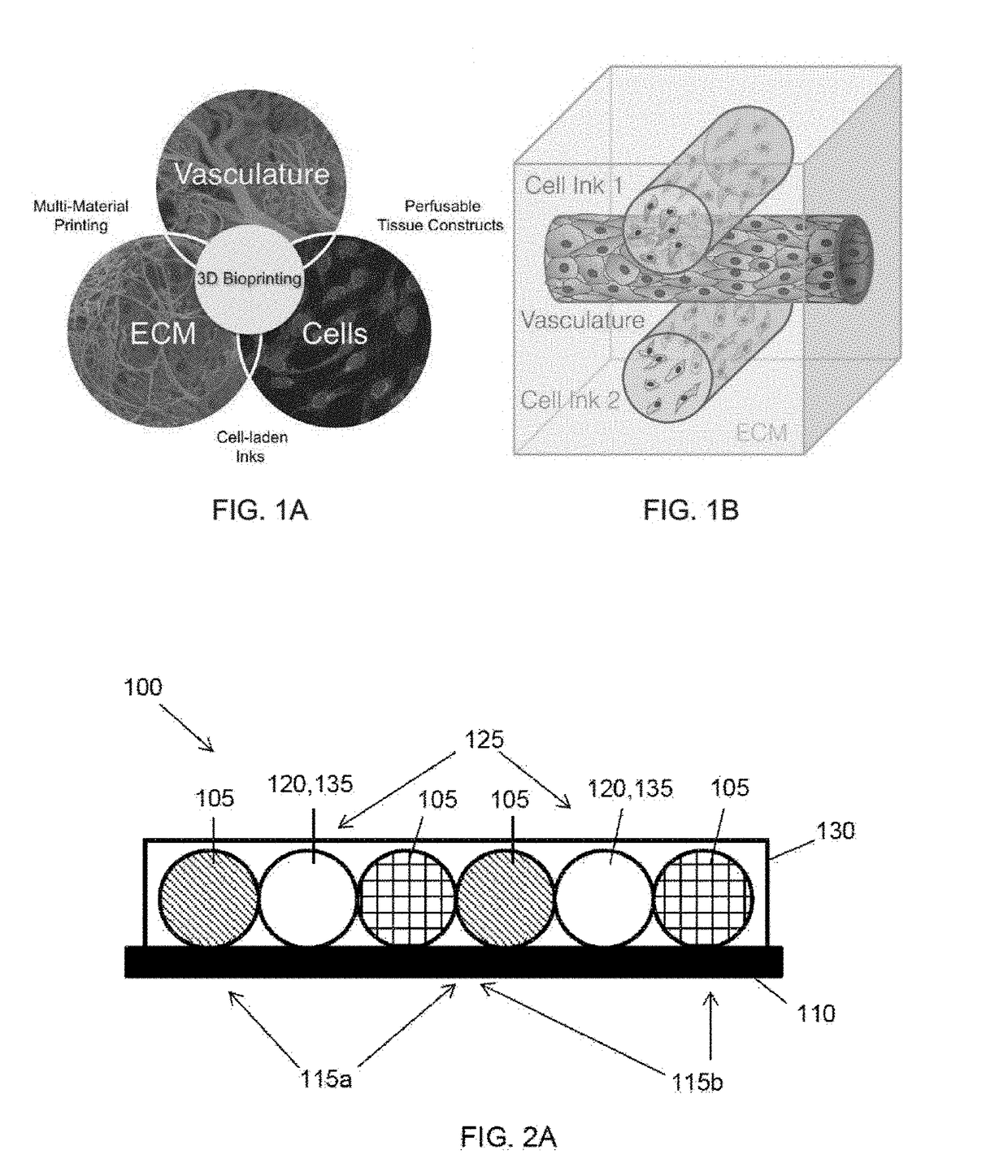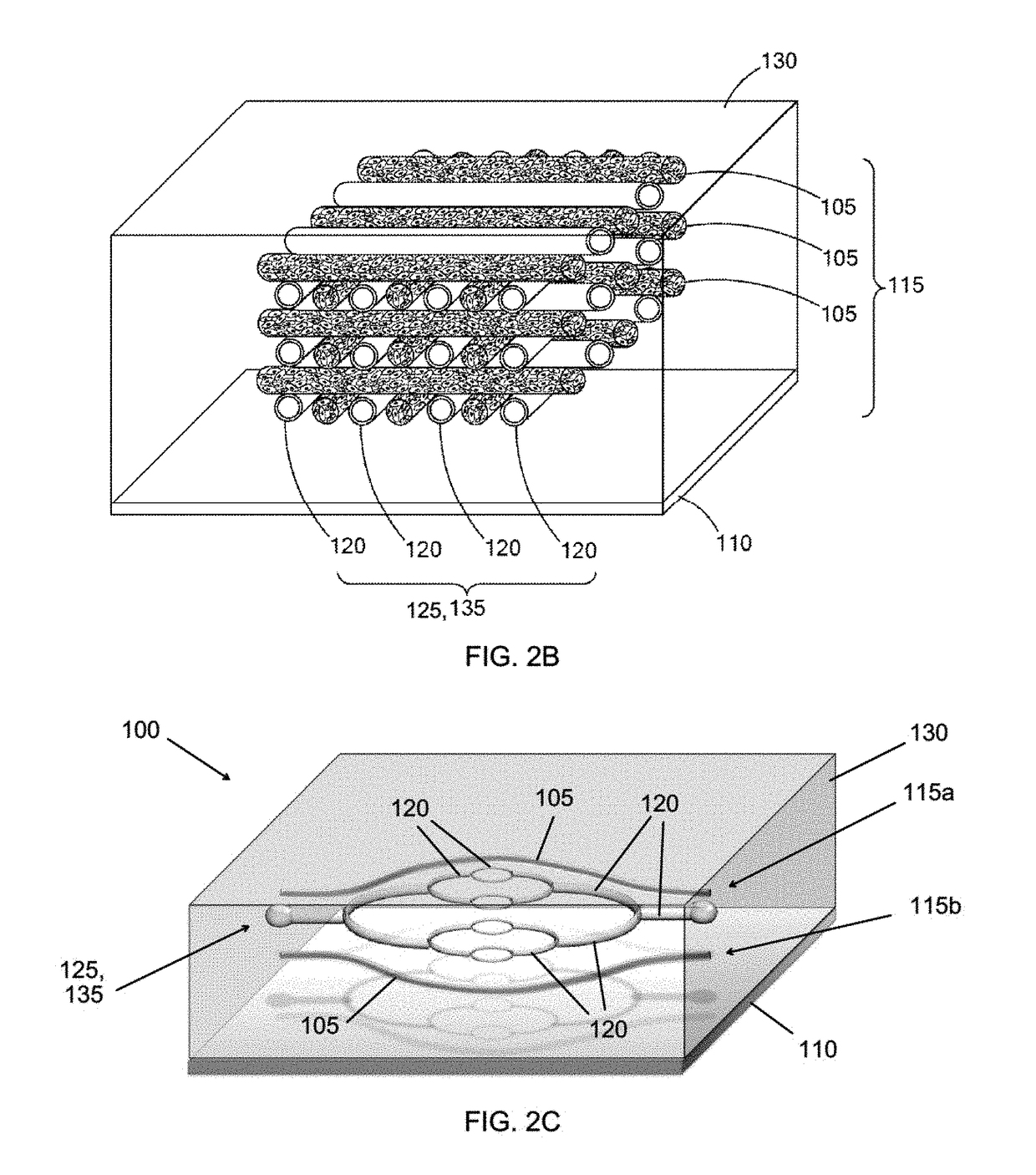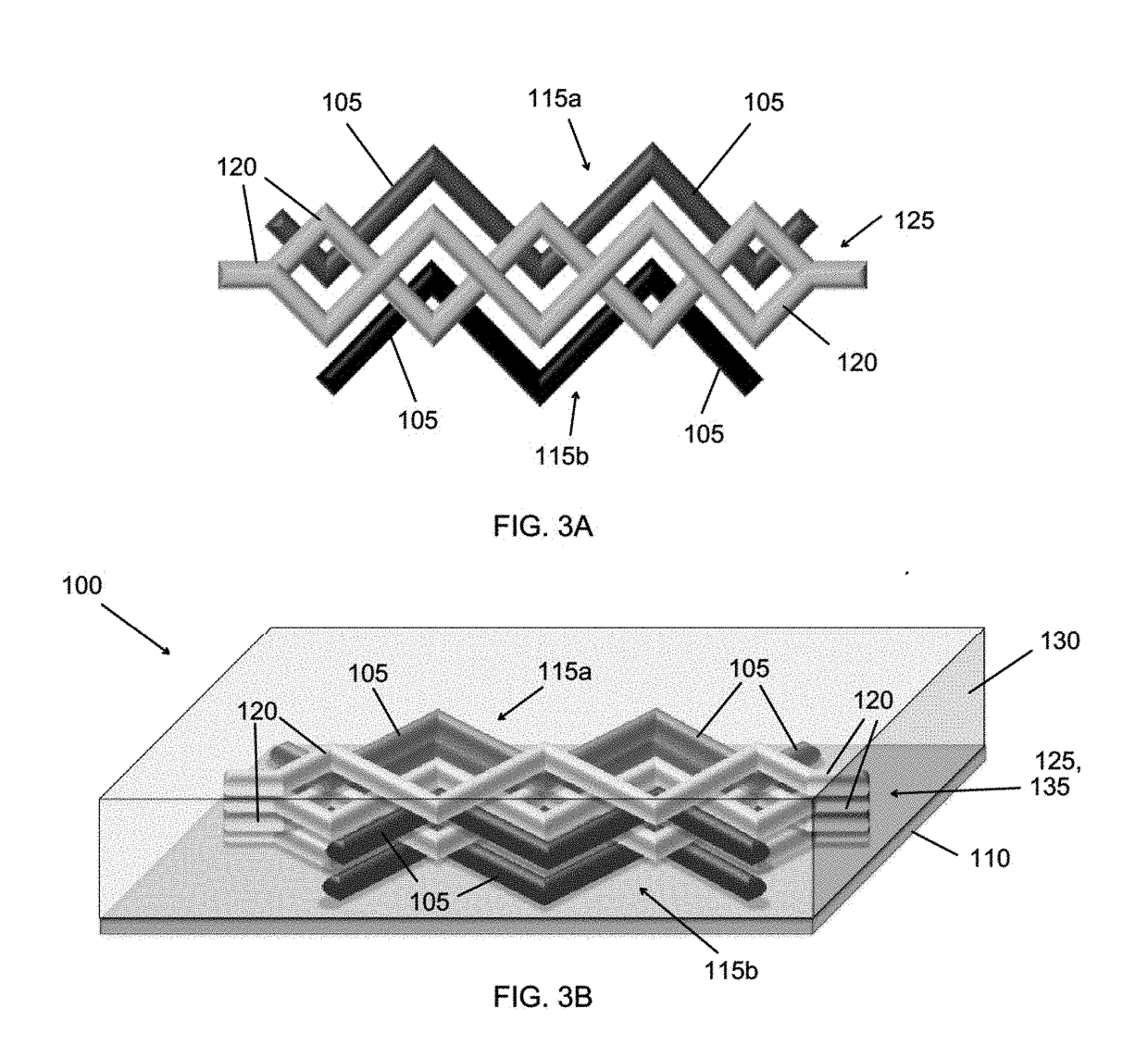Method of printing a tissue construct with embedded vasculature
a technology of tissue constructs and vasculature, which is applied in the field of tissue engineering, can solve the problems of preventing the embedding of vascular networks in tissue constructs and hindering the progress of 3d tissue engineering for decades
- Summary
- Abstract
- Description
- Claims
- Application Information
AI Technical Summary
Benefits of technology
Problems solved by technology
Method used
Image
Examples
examples
Fugitive Ink
[0123]Referring to FIG. 6A, highly concentrated (40 wt. %) Pluronic F127A, which exhibits a strong shear-thinning response when the applied shear stress exceeds the shear yield stress (τy) (e.g., during printing), as well as a plateau shear elastic modulus (G′) that exceeds the shear viscous modulus (G″) when the applied shear stress is below τy (e.g., after printing), is selected as the fugitive ink for an exemplary system. The fugitive ink elasticity is found to be about 2×104 Pa at 22° C., as shown in FIG. 6B. Below the CMT (about 4° C.), the ink liquefies and its elasticity decreases by several orders of magnitude, thereby facilitating its removal from the tissue construct.
[0124]As described above, the sacrificial filaments formed from the fugitive ink may include one or more additional cells, growth factors, drugs, etc. For example, endothelial, epithelial and / or other cells may be dispersed within the fugitive ink and deposited with the sacrificial filaments. When ...
PUM
| Property | Measurement | Unit |
|---|---|---|
| distance | aaaaa | aaaaa |
| distance | aaaaa | aaaaa |
| diameters | aaaaa | aaaaa |
Abstract
Description
Claims
Application Information
 Login to View More
Login to View More - R&D
- Intellectual Property
- Life Sciences
- Materials
- Tech Scout
- Unparalleled Data Quality
- Higher Quality Content
- 60% Fewer Hallucinations
Browse by: Latest US Patents, China's latest patents, Technical Efficacy Thesaurus, Application Domain, Technology Topic, Popular Technical Reports.
© 2025 PatSnap. All rights reserved.Legal|Privacy policy|Modern Slavery Act Transparency Statement|Sitemap|About US| Contact US: help@patsnap.com



